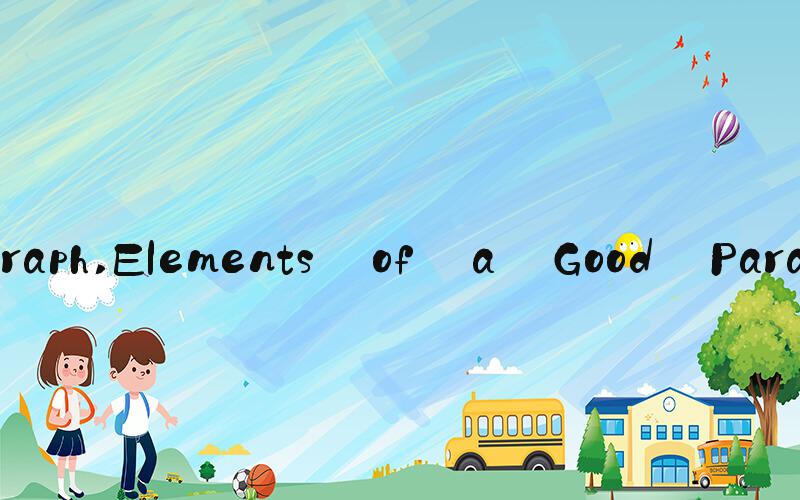 ParagraphIntroduction
ParagraphIntroductionParagraphs are essential components of any written piece of work. By definition, a paragraph is a group of sentences that share a central idea or topic. In order for an essay or article to be well-written, each paragraph must contain a single cohesive idea, which is necessary to ensure that the reader understands the message being conveyed. In this article, we will explore what makes an effective paragraph, examine different types of paragraphs, and provide guidance on how to write a compelling paragraph that engages the reader.
Elements of a Good ParagraphThere are several key elements that make up a good paragraph, including unity, coherence, and completeness. Unity refers to the paragraph's focus on one central idea or topic. Coherence refers to the paragraph's logical ordering of sentences and the connections between them, making sure that they flow nicely. Completeness is when the details of the paragraph fully develop that central idea, with concrete examples and necessary context.
Types of ParagraphsThere are several different types of paragraphs, each with its own purpose and structure. A narrative paragraph tells a story or recounts an event, with a beginning, middle, and end. A descriptive paragraph paints a picture using sensory details and vivid language. An expository paragraph provides factual information or explains how something works. A persuasive paragraph presents an argument or viewpoint and provides evidence and reasoning to support it. It is important to know the different types of paragraphs so that you can choose the most appropriate one for the task at hand.
The Writing Process: Creating a ParagraphNow that we know the key elements of a good paragraph and the different types of paragraphs, how can we create a compelling and effective paragraph? First, select a topic or idea that is narrow enough to be covered in a single paragraph. Then, sketch out a plan for the paragraph by brainstorming or outlining the main points that you want to make. Next, write the topic sentence that introduces the central idea of the paragraph. Write the supporting sentences that build on that idea and provide evidence or examples to support it. Finally, write the concluding sentence that wraps up the paragraph and transitions to the next one.
The Importance of Paragraphs in Effective WritingParagraphs are critical to effective writing as they make it easier for readers to understand the author's message. When used correctly, paragraphs can help break a long piece of work into smaller, more manageable chunks, which readers find less intimidating. They provide structure and organization to the content by grouping related sentences together, making it easier for readers to understand the relationships between different ideas and to follow the author's argument. Additionally, properly constructed paragraphs make your writing more engaging and easier to read.
ConclusionIn conclusion, paragraphs are an essential component of any written work, and understanding their characteristics is critical to producing high-quality writing. Effective paragraphs have a clear central idea, are well-organized, and support that idea with concrete examples and reasoning. There are different types of paragraphs, tailor-made for different purposes, and a good writer knows how to choose the appropriate type for the task at hand. Finally, to create a compelling paragraph, it is vital to identify a narrow topic, plan the paragraph, write detailed supporting sentences, and craft an appropriate concluding sentence. With these tips in mind, writing your next paper or article should be more manageable and enjoyable.
